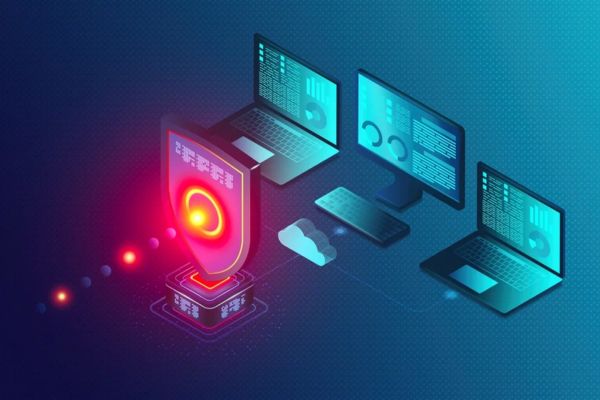Introduction
Endpoint security plays a vital role in today’s digital defense strategy. With cyber threats evolving daily, protecting devices like laptops, smartphones, and servers is no longer optional—it’s essential. These connected devices, or endpoints, are entry points for malicious activity. Without strong endpoint protection software, sensitive data and systems are left exposed.
With the growth of the remote workforce, the need for smarter and more scalable cybersecurity solutions has increased. From cloud-native endpoint protection to next-generation antivirus (NGAV), businesses now demand fast, reliable, and automated tools to keep up with modern threats. This article explores how endpoint protection works, its importance, and the key technologies behind it.
What is Endpoint Security?
Endpoint security, also known as endpoint protection, is a cybersecurity approach that focuses on securing individual devices that connect to a network. These devices include desktops, mobile phones, digital printers, and IoT devices.
- Protects devices from malware, phishing, and unauthorized access
- Acts as the first line of defense outside the network firewall
Endpoint protection tools work by analyzing files, system activities, and network traffic for potential threats. These tools integrate features such as NGAV, EDR, and threat intelligence integration.
What’s Considered an Endpoint?
Any device that communicates with a corporate or public network qualifies as an endpoint. In today’s hybrid environments, these include:
- Laptops, desktops, mobile devices, POS systems
- IoT devices, switches, digital printers, and servers
These endpoints are vulnerable due to their accessibility and often lack physical or technical safeguards, especially when used in remote work settings.
Endpoint Security Importance

The rise in data breach costs and sophisticated attacks shows why endpoint protection is non-negotiable. According to the CrowdStrike 2025 Global Threat Report, modern attackers use advanced techniques that traditional antivirus software can’t detect.
- Over 800,000 complaints of cybercrime were filed in 2022 alone
- Estimated losses of more than $10.3 billion, mainly from lost business
The average cost of a data breach has reached $4.45 million, and most of this damage stems from identity theft, reputational loss, and operational downtime.
CrowdStrike 2025 Global Threat Report
CrowdStrike tracked over 200 adversaries using evasion techniques that go beyond what traditional tools can detect. Their report reveals a spike in social engineering, ransomware, and fileless malware attacks.
- Emphasis on real-time threat detection
- Organizations with cloud-based endpoint security fared better
CrowdStrike also noted a need for zero trust architecture and proactive threat hunting to mitigate risks faster.
How Endpoint Protection Works
Endpoint protection functions through a security management console that centralizes monitoring and response across all endpoints. It works using either:
| Deployment Model | Description |
| On-premises | Security is hosted locally in the data center |
| Hybrid | Legacy system with cloud retrofitting |
| Cloud-native | Built-for-cloud approach with remote access |
Each endpoint runs an agent that scans activity and reports back to the management console. Even offline, NGAV can still prevent threats using machine learning and behavior analytics.
Modern Adversaries and Evasion Techniques
New attackers use evasion techniques to avoid detection. These include:
- Living-off-the-land (LotL) tactics that use legitimate system tools
- Delayed execution and encrypted payloads
To defend against such threats, platforms must combine NGAV, EDR, and threat intelligence in a cloud-native model.
Endpoint Security Benefits
Endpoint security provides a multi-layered defense system that strengthens your entire cybersecurity posture.
- Device security: Ensures mobile and static devices are safe
- Identity protection: Protects user credentials and data access
- Breach prevention: Reduces chances of successful cyberattacks
These benefits are enhanced when using AI-powered platforms that can adapt in real time.
Endpoint Protection Software vs. Antivirus Software
Antivirus software scans for known malware signatures, while endpoint protection software does much more. It includes:
- Threat detection and response (EDR)
- NGAV to block unknown threats
- Managed threat hunting teams for human-led investigations
Traditional antivirus lacks the flexibility to handle modern attacks that evolve every day.
Core Functionality of an Endpoint Protection Solution

To fully secure devices, endpoint protection must integrate:
- Next-Generation Antivirus (NGAV) – Detects unknown threats using AI.
- Endpoint Detection and Response (EDR) – Real-time monitoring and automated response.
- Managed Threat Hunting – Experts identify stealthy threats that automation misses.
- Threat Intelligence Integration – Updates the system with the latest threat data.
All of this is managed via a cloud-based console for efficiency and scale.
What is endpoint security?
Endpoint security protects devices from cyber threats, especially those connected to corporate networks.
What devices are considered endpoints?
Any internet-connected device: laptops, mobiles, IoT, POS systems, and printers.
How does endpoint protection work?
It uses agents, NGAV, EDR, and cloud consoles to detect and block threats.
Difference between antivirus and endpoint protection?
Antivirus removes known malware; endpoint protection includes threat detection, response, and more.
Why endpoint security is important?
It prevents data breaches and secures employee devices, especially with remote work on the rise.
Conclusion
Endpoint protection is not just an IT concern – it’s a business necessity. With the increasing number of endpoints and evolving cybersecurity threats, relying on traditional antivirus is no longer sufficient. Businesses must adopt cloud-native endpoint security platforms that combine NGAV, EDR, and threat intelligence to protect every device.
The future of digital defense lies in real-time threat detection, automated response, and identity protection. Organizations should act now by investing in scalable and intelligent endpoint protection software to stay ahead of modern attackers. A single vulnerability could mean millions in data breach costs and irreparable reputational damage.














